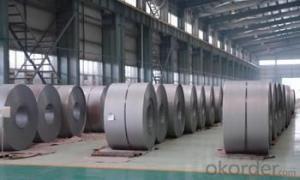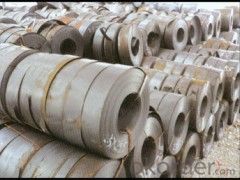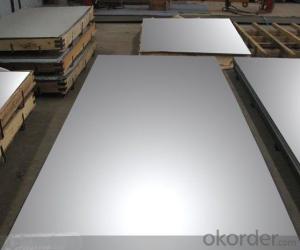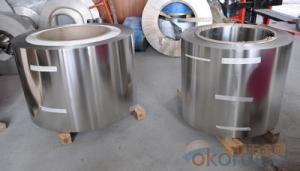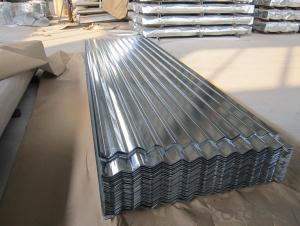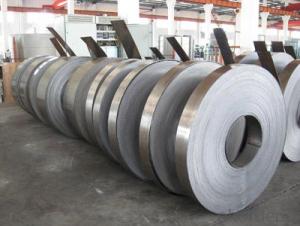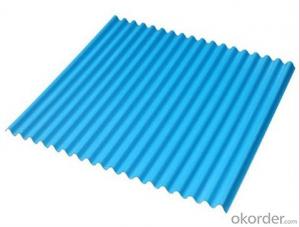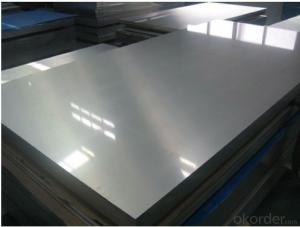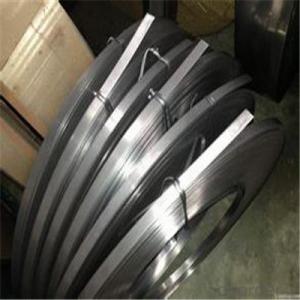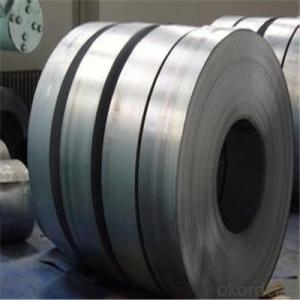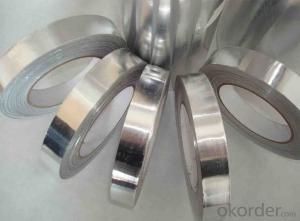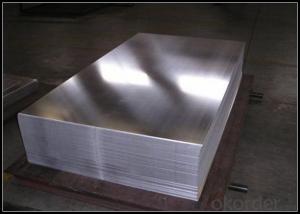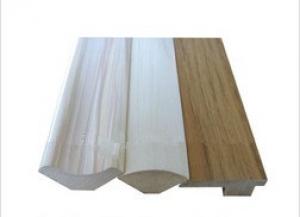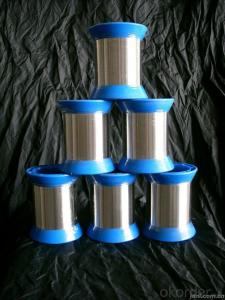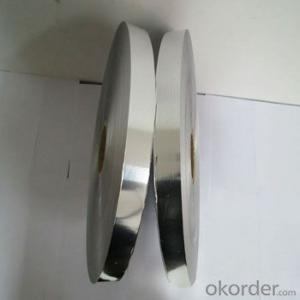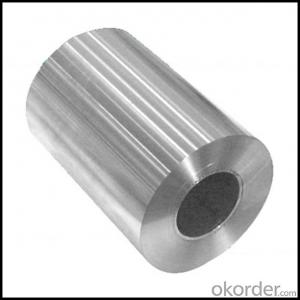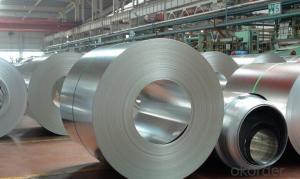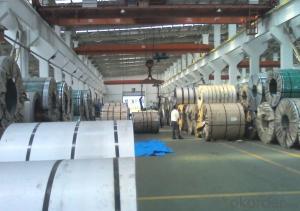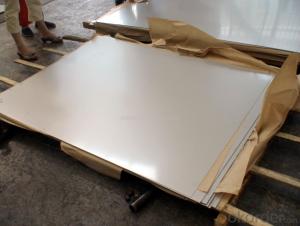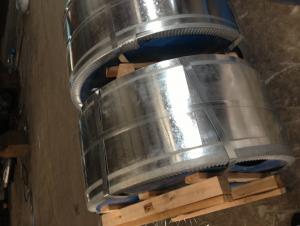Hot Rolled Steel Strip Electrical Appliance Bridge Pipeline Automobile
- Loading Port:
- China main port
- Payment Terms:
- TT OR LC
- Min Order Qty:
- 1000 m.t.
- Supply Capability:
- 10000 m.t./month
OKorder Service Pledge
OKorder Financial Service
You Might Also Like
Structure of Hot Rolled Steel Strip Description
JIS G3131 SPHC\SPHD ASTM A659
HR/Hot Rolled Steel Strip/Band
Hot rolled stieel is a semifinished product obtained from the hot rolling of slabs or billets and is produced for conversion by cold rolling. Cold rolled steel is manufactured from hot rolled, annealed and pickled strip by cold rolling on polished rolls. Depending on the thickness desired, the cold rolling requires various numbers of passes through the mill to effect the necessary reduction and to secure the desired surface characteristics and mechanical properties.
For machinery manufacturing, container manufacturing, automobile, shipbuilding
Main Features of the Hot Rolled Steel Strip
Good quality with hot rolled
Images Hot Rolled Steel Strip
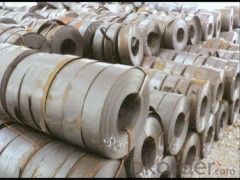
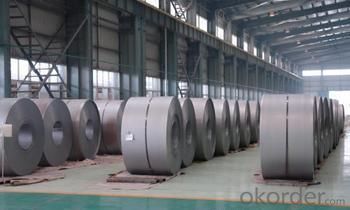
Specification Hot Rolled Steel Strip
JXC
1.25mm-6mm*10mm-600mm
AISI,ASTM,BS,DIN,GB,JIS
Q195,Q215,Q215B,Q235,Q235B
FAQ of Hot Rolled Steel Strip
We offer insurance for quality with low price
We can provide qualify goods,competitive price and speedy delivery
Seawory Export Package Inside:Moisture-proof paper Outside:Iron sheet Use Strip tie for 8 times .
- Q: Can steel strips be used in the construction of bridges?
- Yes, steel strips can be used in the construction of bridges. Steel strips are often used as reinforcement elements in bridge construction due to their high strength, durability, and ability to withstand heavy loads. They provide structural support and enhance the overall stability and longevity of the bridge.
- Q: How are steel strips used in the manufacturing of musical instruments?
- Musical instruments commonly incorporate steel strips for various purposes. An important use of steel strips lies in the creation of piano strings. Typically, these strings comprise high-quality steel wires that are tightly wound around a central steel strip. By lending stability and strength to the string, the steel strip enables it to produce clear and resonant notes when struck by the piano hammer. Steel strips also find application in the construction of specific percussion instruments like the vibraphone and marimba. These instruments utilize steel strips as resonating elements, commonly referred to as bars. The length, thickness, and shape of these steel bars determine the pitch and tone of the notes produced. They are typically mounted on a frame and struck with mallets to generate melodious sounds. Another use of steel strips in musical instruments lies in the production of guitar strings. Although the core of guitar strings is typically composed of steel wire, the winding around the core often incorporates a thin steel strip. This steel strip is coated with a layer of bronze or nickel and tightly wound around the core, providing durability, flexibility, and a distinctive tonal quality to the strings. In summary, steel strips play a vital role in the manufacturing of musical instruments, particularly in the production of piano strings, percussion instrument bars, and guitar strings. These strips contribute to the sound quality, durability, and playability of the instruments, empowering musicians to craft beautiful melodies and harmonies.
- Q: Can steel strips be welded or joined?
- Yes, steel strips can be welded or joined together using various welding techniques such as arc welding, gas welding, or resistance welding.
- Q: What are the transportation guidelines for steel strips?
- Transportation guidelines for steel strips typically include the following: 1. Packaging: Steel strips should be properly packaged to protect them from physical damage and corrosion during transportation. They are often packed in wooden crates or on wooden pallets, with appropriate padding and wrapping materials to prevent any movement or contact between strips. Additionally, securing the packages with straps or bands is essential to ensure stability and prevent any shifting during transit. 2. Loading and unloading: Steel strips are usually transported using trucks, railcars, or shipping containers. When loading or unloading, it is important to use appropriate lifting equipment, such as forklifts or cranes, to avoid any mishandling or damage to the strips. Care should be taken to distribute the load evenly and avoid overloading the transportation vehicle. 3. Stacking: When steel strips are stacked, they should be placed on a flat, level surface to prevent bending or warping. It is recommended to stack them in a way that allows for easy access and inspection, avoiding excessive pressure or weight on the bottom strips. 4. Environmental considerations: Steel strips should be protected from exposure to moisture, rain, snow, or extreme temperatures during transportation. This can be achieved by using weather-resistant coverings or tarpaulins and ensuring that the transportation vehicle is properly sealed and insulated. 5. Documentation: Proper documentation is essential for the transportation of steel strips. This includes accurate labeling of packages with relevant information, such as the type of steel, dimensions, weight, and any special handling instructions. Additionally, keeping records of the transportation process, including dates, times, and signatures, can help track and resolve any issues that may arise during transit. Following these transportation guidelines helps ensure that steel strips reach their destination in the expected condition, minimizing the risk of damage and ensuring customer satisfaction.
- Q: What is the creep resistance of a steel strip?
- The creep resistance of a steel strip refers to its ability to resist deformation or creep under sustained or long-term stress at elevated temperatures. Creep is a phenomenon where materials slowly deform over time when subjected to a constant load or stress at high temperatures. This can be particularly critical in applications where the steel strip is exposed to high temperatures for extended periods. The creep resistance of a steel strip is influenced by several factors, including the composition and microstructure of the steel, as well as the temperature and stress levels it is exposed to. Steel strips with a higher content of alloying elements such as chromium, molybdenum, and vanadium tend to exhibit better creep resistance. Additionally, a fine and homogeneous microstructure with a controlled grain size can enhance the creep resistance of the steel strip. Testing methods such as creep tests are used to evaluate the creep resistance of steel strips. These tests involve subjecting the strip to a constant stress or load at a specified temperature for an extended period and measuring the resulting deformation. The creep resistance is then determined by analyzing the deformation characteristics of the material over time. Creep resistance is an important consideration in various industries, including power generation, aerospace, and automotive, where components are exposed to high temperatures and sustained stresses. By choosing a steel strip with high creep resistance, engineers and manufacturers can ensure the longevity and reliability of their products in such demanding environments.
- Q: Are steel strips used in the production of shipping containers?
- Yes, steel strips are commonly used in the production of shipping containers.
- Q: Are steel strips heat-treatable?
- Yes, steel strips are heat-treatable. Heat treatment is a process used to alter the properties of steel strips by subjecting them to controlled heating and cooling. This process can help enhance their strength, hardness, and other desired characteristics.
- Q: What are the safety precautions to consider when handling steel strips?
- When handling steel strips, there are several safety precautions to consider. First, it is important to wear appropriate personal protective equipment (PPE) such as gloves, safety glasses, and steel-toed boots to protect against cuts, abrasions, and potential falling objects. Additionally, it is crucial to ensure proper lifting techniques and use equipment like forklifts or cranes when moving heavy steel strips to avoid strains or back injuries. Maintaining a clean and organized work area can also minimize the risk of slips, trips, and falls. Finally, being aware of the sharp edges and potential hazards associated with steel strips, workers should exercise caution and follow established safety procedures to prevent accidents or injuries.
- Q: How do steel strips contribute to sustainability efforts?
- Steel strips contribute to sustainability efforts in several ways. Firstly, they are highly recyclable, meaning that they can be reused multiple times without losing their properties. This reduces the need for virgin materials and conserves natural resources. Additionally, steel strips can be manufactured using energy-efficient processes, minimizing the carbon footprint associated with their production. Furthermore, steel strips have a long lifespan and offer high durability, reducing the need for frequent replacements. This not only saves costs but also reduces waste generation. Finally, steel strips are used in various sustainable applications such as renewable energy systems, electric vehicles, and green building materials, further promoting sustainability in different sectors of the economy. Overall, steel strips play a vital role in supporting sustainability efforts by reducing resource depletion, energy consumption, waste generation, and promoting long-lasting and environmentally friendly solutions.
- Q: What are the factors that affect the flatness of steel strips?
- Steel strip flatness can be affected by various factors, which can be divided into material-related and process-related factors. When it comes to material-related factors, the composition and quality of the steel used play a significant role. Different types of steel have different inherent characteristics that affect their ability to resist deformation or maintain shape during processing. Impurities or inconsistent composition can lead to variations in flatness. Another material-related factor is the thickness of the steel strip. Thicker strips are more prone to deformation due to their higher rigidity, while thinner strips may be more susceptible to waviness or buckling. Moving on to process-related factors, the manufacturing process used to produce the steel strips is crucial. This process typically involves hot rolling, cold rolling, annealing, and leveling. If these processes are not properly controlled or if there are variations, it can result in uneven stress distribution, thermal gradients, or insufficient tension, which ultimately leads to non-flatness. The mechanical properties of the equipment used in the steel strip processing also play a significant role. The condition and precision of the rolling mills, leveling machines, and tension devices can affect the ability to maintain flatness. Any wear or misalignment in these machines can introduce deviations in the flatness of the strips. Environmental conditions can also impact the flatness of steel strips. Temperature and humidity variations can cause thermal expansion or contraction, resulting in dimensional changes in the strips. Furthermore, the quality of the storage and handling facilities can influence flatness, as improper stacking or transportation can introduce deformations. Lastly, external forces or stresses applied during subsequent processing or usage of the steel strips can affect their flatness. Bending, shearing, or tensioning forces can cause permanent deformation or alter the flatness characteristics. In conclusion, the flatness of steel strips is influenced by a combination of material-related factors, such as composition and thickness, as well as process-related factors, such as manufacturing processes, equipment quality, environmental conditions, and external forces. It is crucial to properly control and monitor these factors to ensure the desired flatness of steel strips for various applications.
Send your message to us
Hot Rolled Steel Strip Electrical Appliance Bridge Pipeline Automobile
- Loading Port:
- China main port
- Payment Terms:
- TT OR LC
- Min Order Qty:
- 1000 m.t.
- Supply Capability:
- 10000 m.t./month
OKorder Service Pledge
OKorder Financial Service
Similar products
Hot products
Hot Searches
Related keywords
